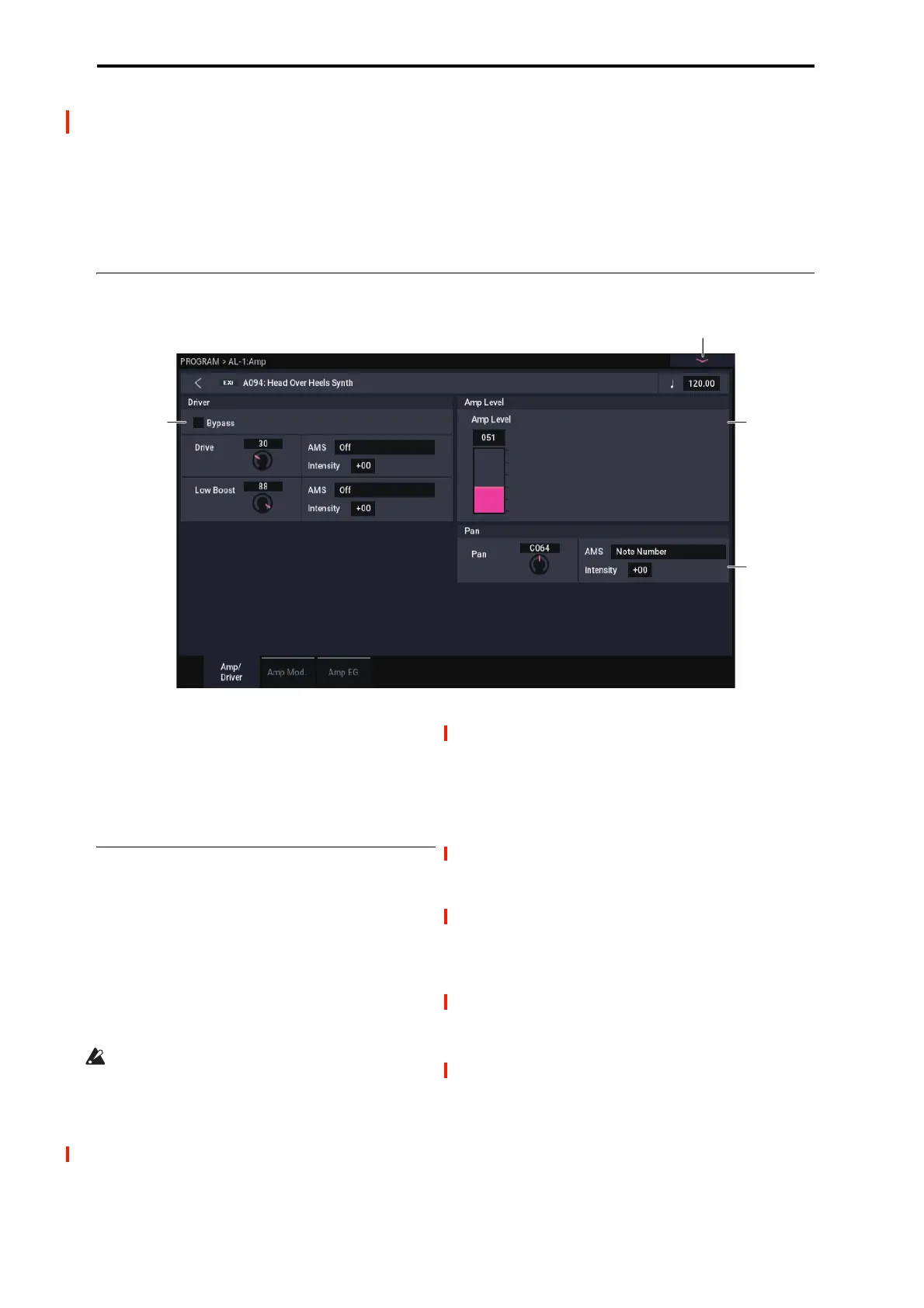EXi: AL-1 Analog Synthesizer
162
PROGRAM > AL-1: Amp
These pages let you control the sound’s volume (also called
“amplitude,” or “amp” for short), pan, and Drive, as well as
its dedicated amp envelopes and keyboard tracking
generators. For instance, you can:
• Set up the Driver circuit, which adds saturation and bass
boost to the timbre.
• Set the pan position and pan modulation.
• Control amp level and modulation, including keyboard
tracking, the amp envelope, LFO modulation, and AMS
control.
6–1: Amp/Driver
This page controls the basic settings for the Amp section.
Here, you can:
• Set up the Driver circuit.
• Set the initial volume level.
• Control the pan position and pan modulation.
6–1a: Driver
The Driver adds saturation and overdrive to the sound, for
everything from subtle fattening to drastic distortion. Unlike
an overdrive effect, the Driver processes each voice
individually, so the timbre stays the same regardless of how
many voices are being played.
The two main parameters, Drive and Low Boost, work
together to create the overall Driver effect. Drive contributes
edge and bite, and Low Boost provides the body as well as
boosting the bass.
Although the oscillators themselves have extremely low
aliasing, the Driver can produce aliasing–especially at
higher frequencies. If your goal is a completely pristine
sound, set the Driver’s Bypass to On. Otherwise, let it
rip!
Bypass [Off, On]
When Bypass is On, the Driver is completely removed from
the signal path.
Drive [0…99]
This controls the amount of edge and bite in the timbre. Low
settings will produce mild saturation, and higher settings
create more obvious distortion.
Often, it’s useful to increase the Low Boost along with the
Drive.
Note: Even when the Drive amount is set to 0, the Driver
circuit still affects the timbre. If your goal is a completely
pristine sound, use the Bypass control instead.
AMS [List of AMS Sources]
This selects an AMS modulation source to control the Drive
amount. For a list of AMS sources, see “Alternate
Modulation Source (AMS) List” on page 901.
Intensity [–99…+99]
This controls the depth and direction of the AMS modulation
for Drive.
Low Boost [0…99]
This low-frequency EQ controls the body character of the
sound. The specific EQ frequencies affected will change
with the Drive setting.
Higher amounts increase the bass boost, and will also
intensify the effect of the Drive parameter.
